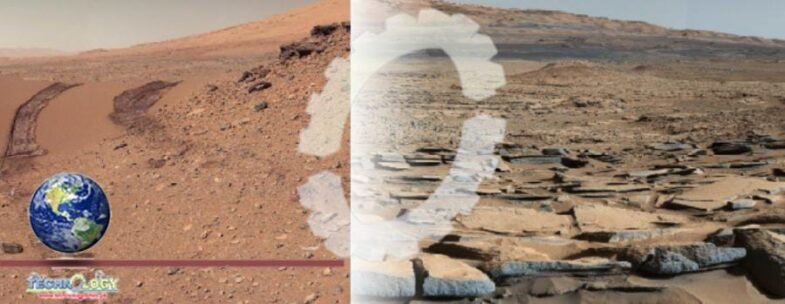he many dangers future human explorers will face on Mars, one of the most troublesome is the toxic chemicals that exist in the Martian soil or regolith. But these chemicals aren’t only a hindrance to exploration — they could also be key to producing usable oxygen on a planet where the majority of the atmosphere is carbon dioxide.

The European Space Agency (ESA) is developing a device that can detect chemicals called reactive oxygen species. These come from sources such as perchlorates, the salts found on the Martian surface which are known to cause thyroid issues and other health problems in humans. There are two big reasons to detect such chemicals: Firstly, to make sure explorers don’t come into contact with them, and secondly, to make sure that the oxygen they can give off isn’t mistaken for a sign of life.
The “Kimberley” formation on Mars taken by NASA’s Curiosity rover. The strata in the foreground dip towards the base of Mount Sharp in the background.A view from the “Kimberley” formation on Mars taken by NASA’s Curiosity rover. The strata in the foreground dip towards the base of Mount Sharp, indicating flow of water toward a basin that existed before the larger bulk of the mountain formed.
Such a detection device, however, could have other useful applications too. “The exciting aspect is that this technique can be used for more than just superoxide detection,” explained ESA materials and processes engineer Malgorzata Holynska in a statement. “The project, supported through ESA’s Technology Development Element, will include the initial design of a large scale reactor device to periodically extract oxygen from soil, what we term ‘oxygen farming’. Solar UV irradiation will then replenish their oxygen supply within a matter of hours. The estimate is that a 1.2 hectare (3 acre) area would yield enough oxygen to keep a single astronaut alive.”
It is difficult to test this developing technology, however. There do exist simulants of the Martian soil, created for research based on what we know about the composition of the regolith there. However, for safety reasons, these simulants have the dangerous chemicals removed, and these are crucial for testing. So the team is creating their own regolith simulant, as well as using samples of Martian and lunar meteorites. The team says it is planning to apply to NASA to see if they can get actual lunar samples from the Apollo missions to test on as well.
“The aim is that the prospecting detector should be smaller than a paperback book,” said Dr. Ioannis Markopoulos, leader of the company 01 Mechatronics company which is planning to produce a prototype detector. “It is likely that astronauts would find it useful across the entire span of any mission to the Moon and Mars.”
Source:Digitaltrends
